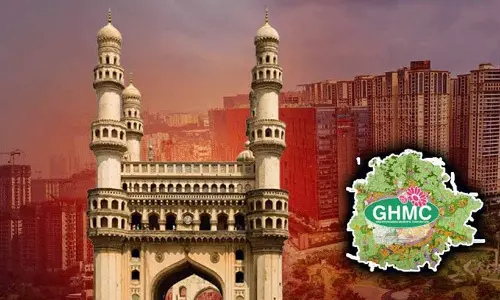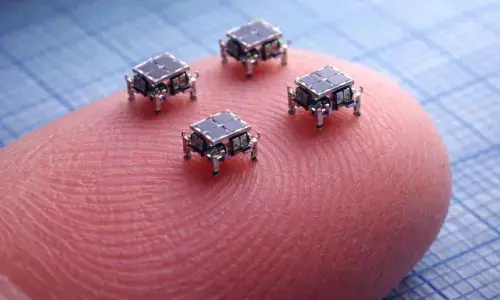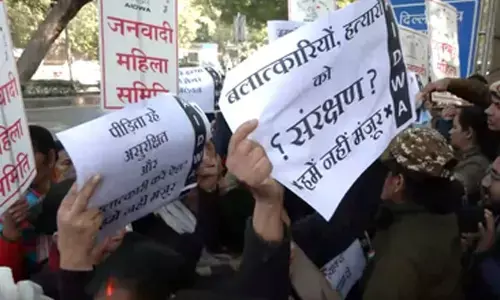Next generation must help calligraphy survive digital age

Delhibased calligrapher Mohammad Zubair says he counts himself among the last few artists in the city who practice the centuriesold art of decorative handwriting in an era in which keystrokes and smartphones are guiding the future Zubair, 36, who has been practising calligraphy for the past nearly 20 years,
Delhi-based calligrapher Mohammad Zubair says he counts himself among the last few artists in the city who practice the centuries-old art of decorative handwriting in an era in which keystrokes and smartphones are guiding the future. Zubair, 36, who has been practising calligraphy for the past nearly 20 years, admits that the society has to embrace technology to move ahead but asserts "computers will never be able to match the capabilities of calligraphers". "This iconic art form saw its heyday even till 1980, until when computers arrived.
Calligraphers were earlier employed by government agencies, civic bodies to design boards and signages, but with technology, our master prints are just taken on a CD and then replicated," he told PTI. "So, the earnings dropped significantly, as artists were being paid just for one-time project. And, sometimes, clients just download prints from computers and print them. Calligraphy is not being patronised as it should be. Our youth should help this art form survive," Zubair rued. Seeking to promote calligraphy among school children, Delhi-based Indian National Trust for Art and Cultural Heritage (INTACH) organised a two-day workshop for over 100 students drawn from 30 schools in Delhi and neighbouring cities, which ended Friday.
Zubair, trained in this art from the Delhi Urdu Academy and currently an instructor at a National Council for Promotion of Urdu Language (NCPUL) centre in east Delhi, was roped in by INTACH to lead the workshop. According to him, many students did not know about calligraphy and some knew about English one but not those done in Urdu or Arabic. "But, they were so fascinated that many told me that they wish to learn it over and above their regular studies.
If youth like them, can understand the value of our precious heritage, calligraphy will thrive, along with technology," he said. At the workshop, students learned to hold the bamboo 'kalam' (wooden pen) and were taught to write Dilli–dur-ast, a famous quote of renowned Sufi saint Nizamuddin Auliya. Instruction material, along with 'kalam', was also distributed to them after the event. Calligraphy or the art of decorative handwriting in India dates back to ancient era when Sanskrit manuscripts were being written and ornamentally illustrated, and then in Mughal era, it thrived with the patronage of the rulers, for Urdu, Arabic and Persian calligraphies, with many such old texts now a national treasure.
Rajeev Kumar, 50, another Delhi-based calligrapher and an engineer-turned-graphic designer, who writes in 11 scripts including Tamil, Telugu and Gurumukhi (Punjabi), besides English and Hindi, however, feels "calligraphy need not fear technology". "Calligraphy and typography used for font designing in computer can co-exist very harmoniously. For mass production, calligraphy cannot be the right option, we need typographic technology to meet that logistical demand," said Kumar, who has been practising calligraphy for the last 25 years.
Both Zubair and Kumar rued that in India, even well-known art and design educational institutions "do not have, even an optional course on calligraphy". "We can't fight technology, and so the only way to take this art to the next generation, is through the channel of education. Our students don't know what are they losing, so how will they act on it. Also, once they have mastered the original art, they will do wonders with technology too," Zubair said. NIFT-Patna Director Sanjay Shrivastava emphasised that calligraphy is country's "priceless heritage" and needs to be preserved through practice and other means. Asked, if there was any course at the college on this art form, he said, "Students are exposed to it as part of fashion communications course, but, no there's no dedicated course or elective on it.
" Brand strategy expert and visiting faculty at the Indian Institute of Mass Communication (IIMC) here, Ramesh Tahiliani, said calligraphy is very much alive in the age of digital era, and having esoteric purposes for its use, allows to "keep its exclusivity". "So, be it special weddings cards or certificates of many institutions or logos of various brands, especially some of the luxury brands, calligraphy finds its place and importance and charming appeal, which it would not have if the scale of production was large," he told PTI.
Bahrain-based Asgharali Perfumes, founded in 1924, uses a lot of calligraphic art on it designer bottles and and promotional material. "Our company focusses a lot on aesthetic appeal and calligraphy has that charm," an official from its marketing department said. Airlines like Etihad and Emirates use stylised Arabic and have a high recall value. Search giant Google's logo is based on the calligraphy-inspired font, Catull BQ, according to creative platform 99designs.com. Zubair, who writes in five languages -- Urdu, Arbic, Persian, English Hindi and Punjabi, said calligraphy is not about just techniques, but also finer intricacies, like the slant, the size of 'nuqta' (dot) and where to exert pressure and where to go free hand. "If you do improper 'nuqta', 'khuda' can become 'juda'," he says with a smile. "Irrespective of the future that holds for it, I have decided to make my son a calligrapher too. I am very proud of this heritage," he said.
BY Kunal Dutt



















